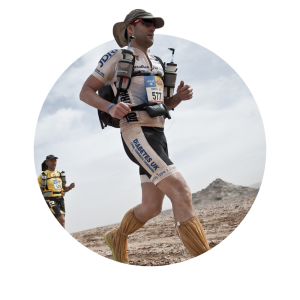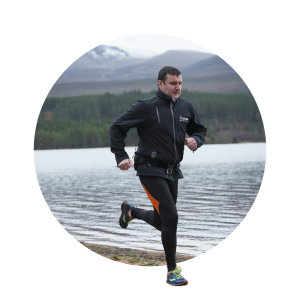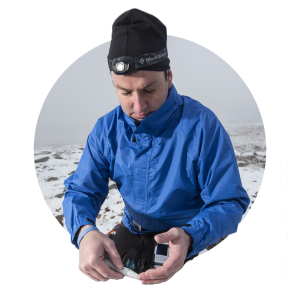
Saturday 26 April was certainly a very interesting day as far as sport and my type 1 diabetes goes.
The day would be a reunion with a group of runner friends. We call ourselves the ‘Tartan Army’ and we met sharing a bivouac last year in the Marathon de Sables – the notorious six-day ultra marathon that takes place in the Sahara desert. But this reunion wasn’t for a catch-up and a beer. We were running again, in the 53-mile Highland Fling Ultra Marathon from Milngavie to Tyndrum in the West Highlands.
On the Friday night, I travelled down to Glasgow to stay at my friend Derek’s house along with another two members of the bivouac. We headed to his house for a three course meal which left me going to bed with my blood glucose (BG) higher than I normally like. We had porridge for breakfast at 3.30am, which raised my BG again. As a result, I was constantly doing BG tests on the way to the race to make sure it was at a safe level before the start. I lined up at 6am with 799 other competitors – happy I finally had my levels under control.
Throughout the race there were four food drop-off stations which doubled up as timing-chip check points. I had pre made my drop-off bags with energy drinks, bars and gels which would be waiting for me at each station. I ran with a continuous glucose monitor (CGM) which, via Bluetooth, told my insulin pump my BG levels and in what direction they were going. This is really beneficial during events as I don’t have to stop so often to do blood test readings.
All was going very well until I reached the 18 mile mark. I had started my descent down to Loch Lomond when I felt something wasn’t right. It turned out to be my worst fear – the cannula for my insulin pump had detached from my belly. I had to make some quick and serious decisions before arriving at food pick-up point one. Do I risk carrying on with no insulin or do I take a break? I decided on the latter. I got to the check point and got handed my food bag, but I knew I couldn’t take carbohydrates on board without insulin. I took only an energy bar and a gel and put them in my bum-bag, just in case my BG dipped too low and caused a hypo.
I filled my camelback with water and set off into the unknown.
This was where I really started juggling the books. I used the effort I was putting in to help control my BG levels. If I saw the trend arrows on my CGM dipping, I put in more effort knowing adrenaline along with intense effort would help raise my levels. If I saw them going up too much, I took the foot off the gas to let them lower. At each food pick-up I continued to take only water, knowing I couldn’t risk a high BG level by taking carbohydrates. I ran the last 35 miles on water alone and finished surprisingly strong. In the final 12 mile section I caught up with around 30 runners and finished 173rd in a time of 10 hours 47 mins.
Having downloaded my CGM readings they showed that from 6am to 4.47pm that day my BG was almost within a range similar to a person without diabetes. Pretty good, considering I was running into the total unknown.
I did eventually get a beer with the Tartan Army. It’s been suggested that for the next reunion to miss out the run and just have a beer!
This article was first published by JDRF at the following website address http://www.jdrf.org.uk/news/jdrf-type-1-diabetes-blog/running-into-the-blood-glucose-unknown-by-roddy-riddle




Hi Roddy
I’m a T1 diabetic since 1981 and since a bad do with my eyes three years ago (hospital said Sod’s law rather than poor control) have got back into exercising regularly. I’ve done two Tough Mudders now and signed up for a third next year, nothing like MdS or Ice Marathons but better than a walk round the park!
This blog entry is brill because it confirms what I’ve discovered in my training about BS levels rising after some exercises (typically resistance or HIIT) while remaining pretty stable after running. The 12 hour effect on BS is more noticeable. I love that you used different forms of exercise to control BS, that’s right up my street. Anyway took the plunge and started on pump yesterday and am hoping it will give me even more flexibility. I’m having to get my head round having something almost permanently attached to me after being an “invisible” diabetic for 33 years, but I think the control and improved HBa1c will make it worth it.
Really enjoy your blog, it’s good to find someone who makes T1 fit them rather than the other way round!
Oliver